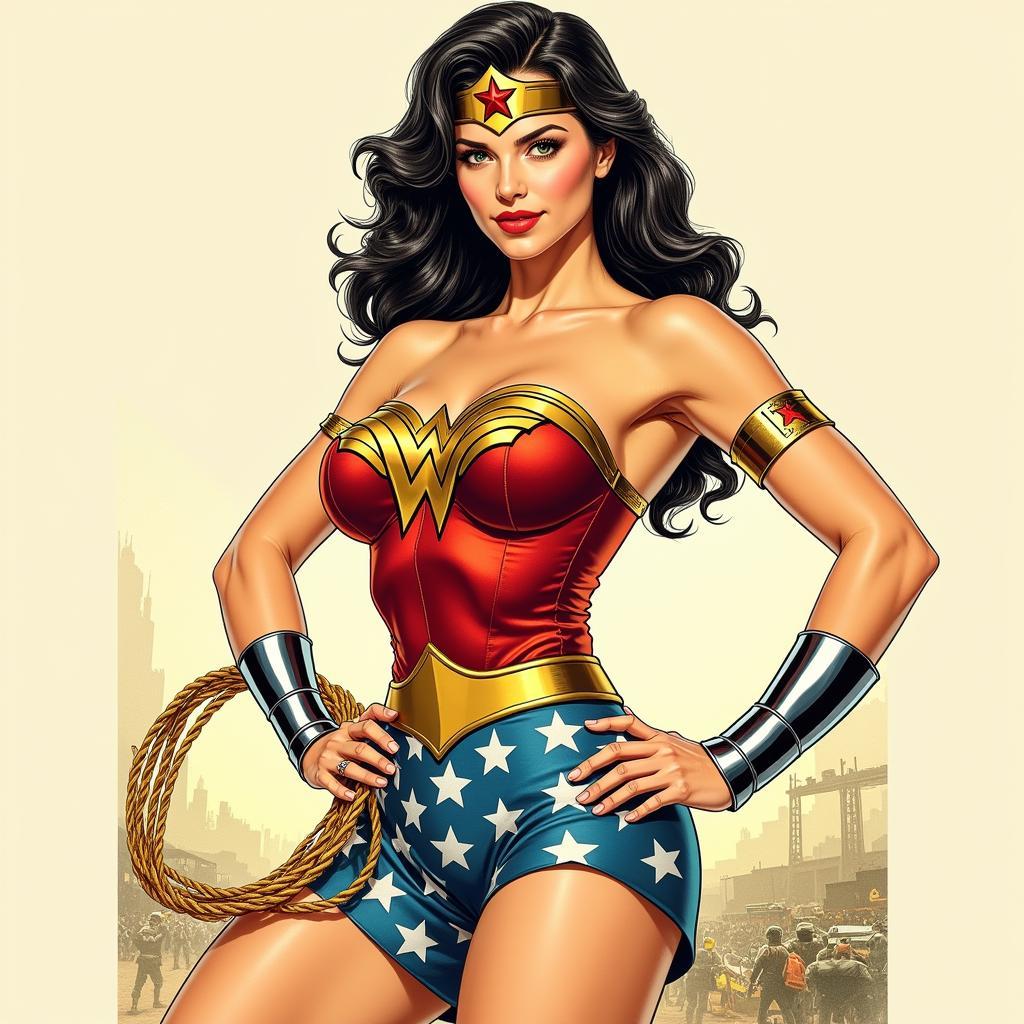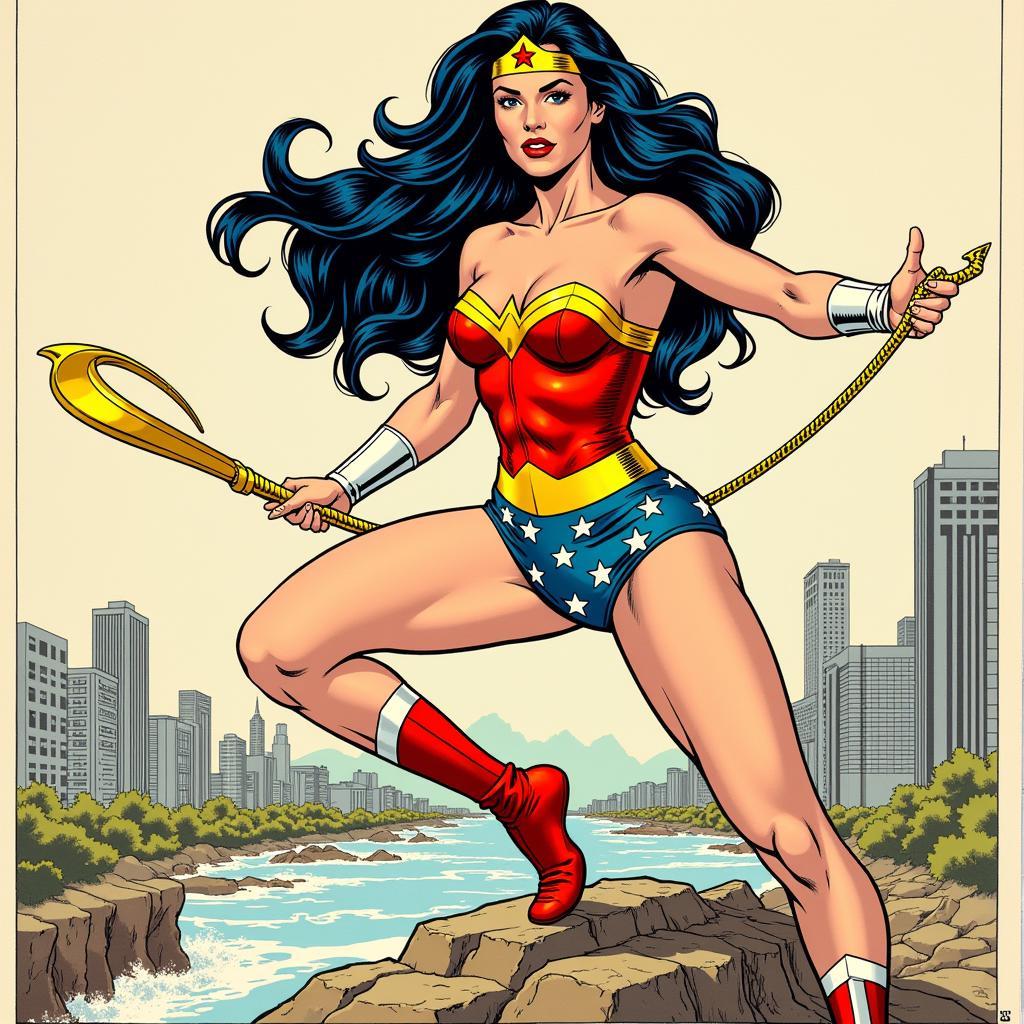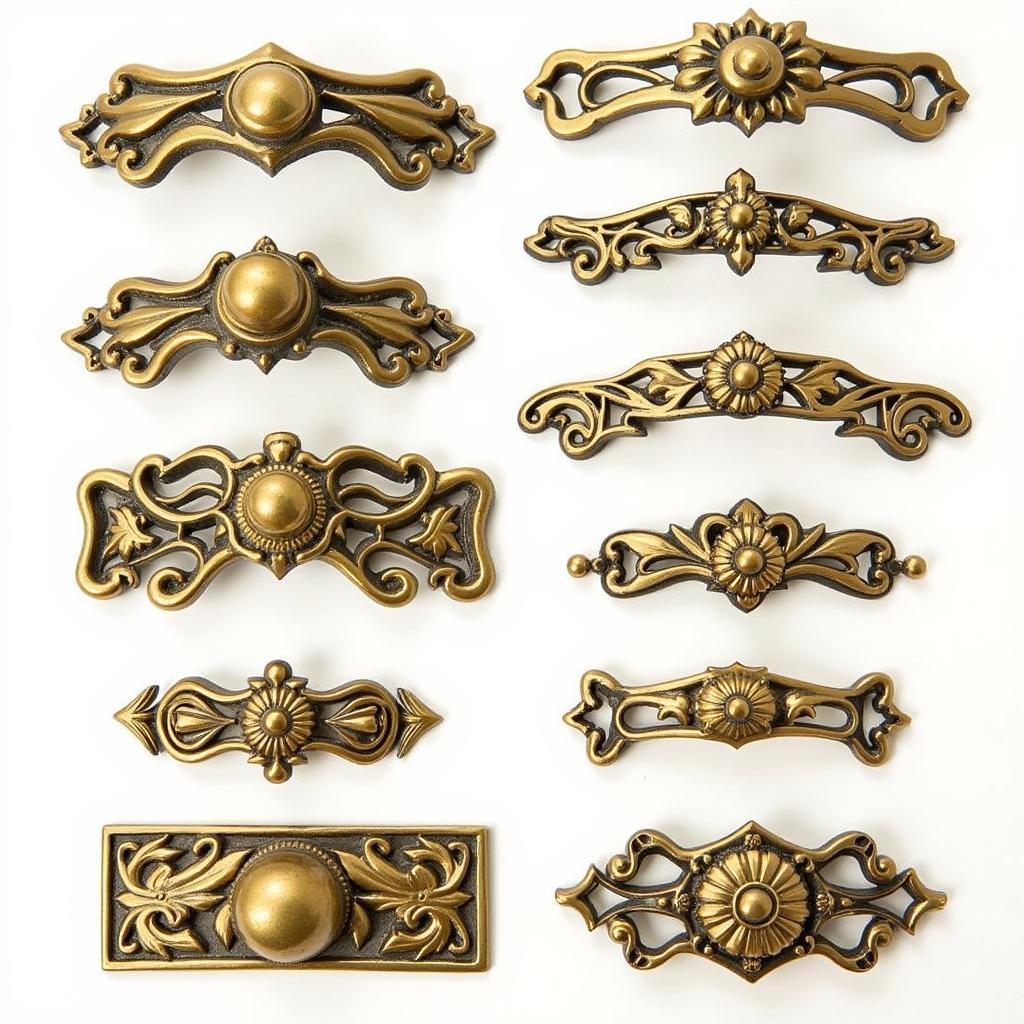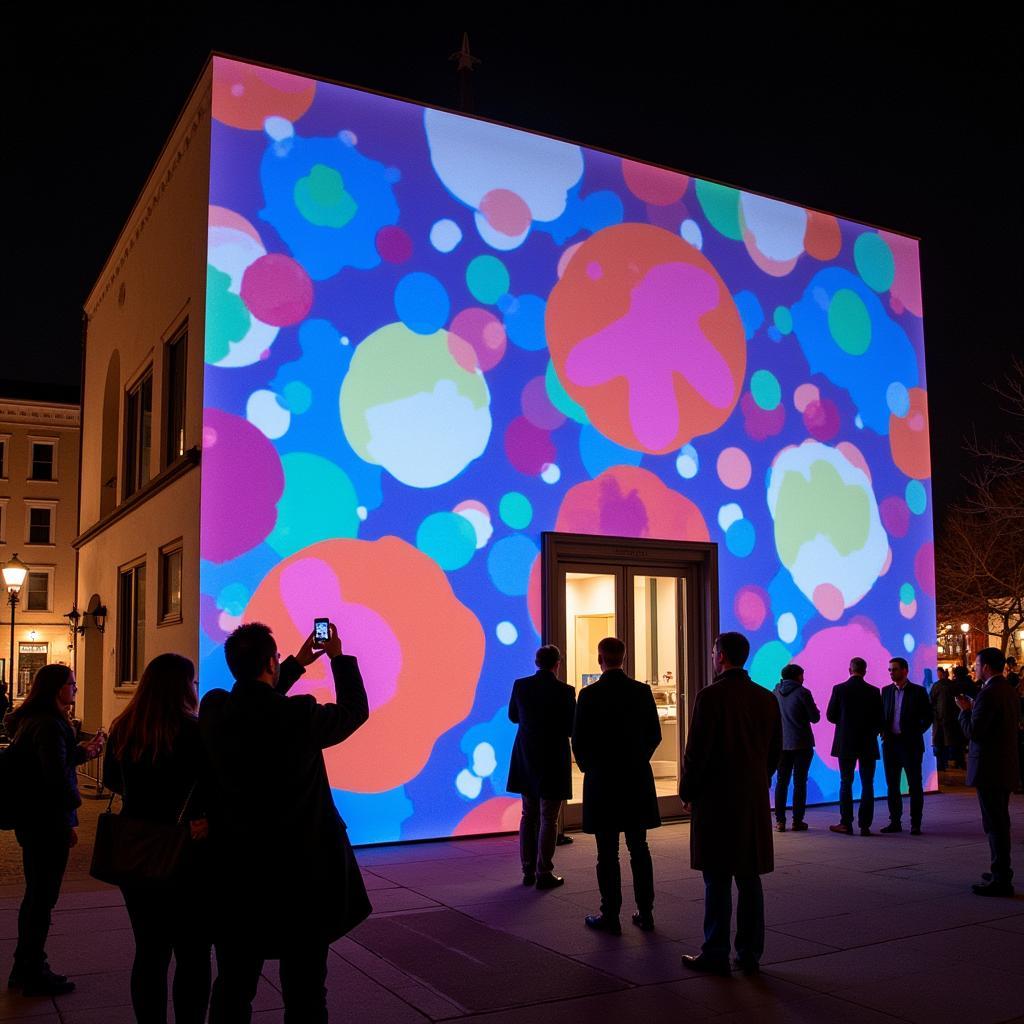Wonder Woman Comic Book Art: A Journey Through Decades of Powerful Imagery
Wonder Woman Comic Book Art has captivated audiences for generations, showcasing the Amazonian princess’s strength, grace, and unwavering commitment to justice. From her Golden Age origins to her modern interpretations, Wonder Woman’s visual representation has evolved alongside her narrative, reflecting changing societal values and artistic trends. This exploration delves into the rich history of Wonder Woman comic book art, highlighting key artists, iconic covers, and the enduring impact of her visual legacy. Let’s dive into the world of Wonder Woman’s captivating artistry. After reading this article, you can check out our selection of Wonder Woman comics art.
The Golden Age and the Birth of an Icon
Wonder Woman’s first appearance in All Star Comics #8 (1941), penciled by H.G. Peter, established her as a powerful force. Peter’s art, with its bold lines and dynamic action, defined Wonder Woman’s early aesthetic. Her costume, a patriotic symbol of American strength during wartime, further cemented her image as a symbol of empowerment. These early depictions portrayed Wonder Woman as a warrior, but also as a compassionate figure, balancing strength with grace.
 Wonder Woman in her classic Golden Age costume, drawn in the distinctive style of H.G. Peter.
Wonder Woman in her classic Golden Age costume, drawn in the distinctive style of H.G. Peter.
The Silver and Bronze Ages: Evolution and Experimentation
The Silver and Bronze Ages saw a shift in Wonder Woman’s portrayal. Artists like Ross Andru and Mike Sekowsky brought a more streamlined and glamorous aesthetic to the character. While maintaining her core strength, Wonder Woman’s appearance became more refined, reflecting the changing artistic styles of the time. This period also saw experimentation with different storylines, including a period where Wonder Woman abandoned her powers and became a mod-inspired secret agent.
The art of DC Comics often experimented with different styles. Wonder Woman, as a central figure in this universe, was no exception. From the bold lines of the Golden Age to the more refined aesthetics of later periods, her artistic evolution mirrored the changing landscape of comic book art itself. This experimentation sometimes led to controversial periods, such as the time she gave up her powers, showcasing the dynamic nature of the character’s development.
 Wonder Woman in her Silver Age costume, illustrated by Ross Andru, demonstrating her agility.
Wonder Woman in her Silver Age costume, illustrated by Ross Andru, demonstrating her agility.
The Modern Age: Power and Grace Redefined
The Modern Age has seen a resurgence of Wonder Woman’s classic power and grace. Artists like George Pérez, Adam Hughes, and Cliff Chiang have reimagined her for contemporary audiences, emphasizing both her physical prowess and her compassionate nature. This era has embraced Wonder Woman’s mythological roots, portraying her as a true Amazonian warrior princess. The detail and artistry in modern Wonder Woman comic book art have elevated her visual representation to new heights. Wonder Woman canvas wall art captures the essence of these modern depictions.
What makes Wonder Woman comic book art so compelling? It’s the unique blend of strength, grace, and mythology that artists have captured over decades. From her iconic costume to her dynamic poses, Wonder Woman’s visual representation is a testament to her enduring power and appeal. Her art reflects not only the evolution of comic book aesthetics but also the changing role of women in society.
 Wonder Woman in her modern costume, illustrated by Cliff Chiang, radiating power and grace.
Wonder Woman in her modern costume, illustrated by Cliff Chiang, radiating power and grace.
Wonder Woman’s Impact on Pop Culture
Wonder Woman’s influence extends beyond the pages of comic books. Her image has permeated pop culture, inspiring countless artists, designers, and fans. From pop art wallpapers to high-fashion designs, Wonder Woman’s iconography has become a symbol of female empowerment and a celebration of powerful women. For fans of artist Cary Nord, there are exciting intersections between his style and the powerful imagery of Wonder Woman.
Conclusion: A Timeless Icon
Wonder Woman comic book art continues to inspire and captivate, showcasing the evolution of a powerful and iconic character. From her Golden Age origins to her modern interpretations, Wonder Woman’s visual legacy remains a testament to her enduring appeal and her ongoing relevance in a changing world. Her art is not merely a reflection of her stories but also a powerful statement about the evolving representation of women in media. Explore the world of Wonder Woman comics art and immerse yourself in her captivating world.
FAQ
- Who created Wonder Woman? William Moulton Marston.
- When did Wonder Woman first appear? 1941.
- What are Wonder Woman’s superpowers? Superhuman strength, speed, flight, and the ability to deflect bullets with her bracelets.
- What is Wonder Woman’s real name? Diana Prince.
- What is the name of Wonder Woman’s homeland? Themyscira.
- What is Wonder Woman’s iconic weapon? The Lasso of Truth.
- Who are some of the most influential Wonder Woman artists? H.G. Peter, George Pérez, Adam Hughes, and Cliff Chiang.
Need support? Contact us 24/7: Phone: 02462573573, Email: danteum@gmail.com or visit us at Savico Megamall, 7-9 Đ. Nguyễn Văn Linh, Gia Thụy, Long Biên, Hà Nội 10000, Việt Nam.



